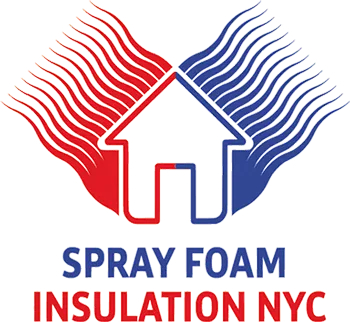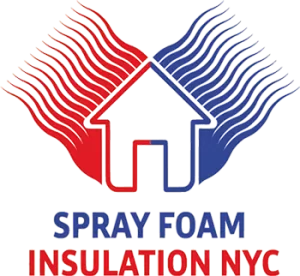Why is my house always cold?
Transform Your Cold Home into a Cozy Retreat with Insulation Solutions
Why is my house always cold? – Are you tired of shivering in your own home? Does the thought of winter make you dread the chilly drafts that seem to seep in through every crevice? You’re not alone. Many homeowners find themselves battling the cold, especially in areas like Long Island, Queens, Brooklyn, and Manhattan where temperatures can drop significantly. Fortunately, there’s a solution that can turn that frigid atmosphere into a warm, inviting haven.
In this blog post, we will explore various insulation options, particularly the benefits of spray foam insulation, and provide tips on how to effectively insulate your home. By the end, you’ll have the knowledge necessary to create a cozy living environment and say goodbye to those biting winds for good.
Understanding the Importance of Home Insulation
To combat the cold effectively, it’s essential to understand what home insulation is and why it matters. Insulation is a material that slows down heat transfer between the inside of your home and the outside environment. This means that in winter, it keeps the warm air inside, and in summer, it prevents the hot air from entering your home.
How Insulation Works
Insulation works by creating a barrier that limits airflow, effectively keeping your home at a comfortable temperature. It can be installed in various parts of your home, including the attic, walls, and floors. The efficiency of insulation is measured using an R-value, which indicates its resistance to heat flow—the higher the R-value, the better the insulation.
Why Insulation is Essential
Without proper insulation, your heating system must work overtime to maintain a comfortable temperature. This not only leads to higher energy bills but can also cause wear and tear on your heating equipment. Additionally, inadequate insulation can lead to moisture buildup, which can result in mold growth and structural damage.
The Benefits of Insulating Your Home
- Energy Efficiency: Proper insulation can significantly reduce your energy consumption, leading to lower utility bills.
- Comfort: A well-insulated home maintains a consistent temperature, making it more comfortable year-round.
- Noise Reduction: Insulation can help dampen noise from outside, providing a quieter living environment.
- Enhanced Property Value: Homes with quality insulation often see an increase in property value and appeal.
Types of Insulation Materials
When it comes to insulating your home, there are several types of materials to consider. Each has its own set of advantages and applications, which can cater to your specific needs.
Spray Foam Insulation
One of the most effective insulation methods available today is spray foam insulation. It is a popular choice among homeowners due to its high R-value and versatility.
- What is Spray Foam Insulation?
Spray foam insulation is made from a mixture of isocyanate and polyol resin, which expands upon application. This unique property allows it to fill gaps and cracks, creating a seamless barrier against air leakage.
- R-value of Spray Foam Insulation
The R-value for open-cell spray foam insulation typically ranges between 3.5 and 3.7 per inch, while closed-cell foam can achieve an impressive R-value of 6.5 to 7 per inch. This makes it one of the most effective insulation types available for residential properties.
- Energy Efficiency
Spray foam insulation can help reduce heating and cooling costs significantly, as it prevents air leaks that can compromise your home’s temperature.
Fiberglass Insulation
Fiberglass insulation is another common option, known for its affordability and effectiveness.
- How It Works
Composed of tiny glass fibers, fiberglass insulation traps pockets of air, which slows the transfer of heat. It’s available in batts, rolls, or loose-fill forms.
- R-value
The R-value for fiberglass insulation ranges from 2.9 to 4.3 per inch, depending on its density and thickness.
- Limitations
While fiberglass insulation is effective, it can settle over time, reducing its insulating capacity. Additionally, proper installation is crucial to avoid air gaps.
Cellulose Insulation
Cellulose insulation is made from recycled paper products and is an eco-friendly choice.
- Benefits
It’s treated with fire retardants and offers good thermal performance while being one of the most sustainable insulation options on the market.
- R-value
The R-value for cellulose insulation ranges from 3.1 to 3.8 per inch, depending on the installation method.
- Installation
Cellulose insulation is typically blown into wall cavities or attics and can be a great choice for retrofitting existing homes.
Recommended R-Values for Different Areas
Understanding the recommended R-values for various parts of your home can help ensure optimal insulation.
Attic Insulation
The attic is one of the most critical areas to insulate, as heat rises and can escape through the roof.
- Recommended R-value
For homes in Long Island and surrounding areas, an R-value of R38 to R60 is generally recommended for attic insulation.
- Benefits of Proper Attic Insulation
Insulating your attic not only keeps your home warm but also protects against ice dams and potential roof damage.
Wall Insulation
Insulating exterior walls is essential for maintaining consistent temperatures throughout your home.
- Recommended R-value
The recommended R-value for walls typically ranges from R13 to R21, depending on whether you’re using fiberglass, cellulose, or spray foam insulation.
- Impact on Comfort
Well-insulated walls minimize drafts and improve overall comfort.
Floor Insulation
Floors, especially over unheated spaces like garages or basements, can greatly benefit from insulation.
- Recommended R-value
For floor insulation, an R-value of R19 to R30 is generally recommended.
- Importance of Floor Insulation
Proper floor insulation provides a cozy feel and helps reduce heat loss to the ground.
Insulating Specific Areas of Your Home
Beyond the standard areas of insulation, there are other key spaces in your home that require attention for maximum comfort.
Basements and Crawl Spaces
Basements and crawl spaces are often overlooked when it comes to insulation, yet they play a significant role in maintaining your home’s temperature.
- Insulation Strategies
Insulating these areas helps reduce moisture and prevent drafts from affecting the upper levels of your home.
- Recommended Materials
Rigid foam boards or spray foam insulation are excellent choices to seal off these spaces effectively.
Windows and Doors
Air leaks around windows and doors can contribute to significant heat loss.
- Sealing Techniques
Installing weather stripping and door sweeps can effectively seal gaps and improve insulation.
- Window Treatments
Consider adding thermal curtains for an extra layer of insulation during colder months.
Attic Hatches and Ducts
Attic hatches and ducts can also be sources of heat loss if not insulated properly.
- Sealing Ducts
Use mastic sealant or metal tape to seal any gaps around your ductwork.
- Insulating Hatches
Insulate your attic hatch with a cover or blanket to further reduce heat loss.
The Cost of Insulating Your Home
While the initial investment in insulation can seem daunting, the long-term savings can be significant.
Average Costs
- Spray Foam Insulation
On average, spray foam insulation can cost between $1.00 and $3.00 per square foot, depending on the thickness and type.
- Fiberglass Insulation
Fiberglass batts typically range from $0.50 to $2.00 per square foot.
- Cellulose Insulation
Expect to pay between $0.75 and $2.50 per square foot for cellulose insulation.
Return on Investment
Investing in insulation can yield a return on investment (ROI) of up to 107% due to reduced energy bills and increased home comfort.
DIY vs. Professional Installation
Deciding whether to insulate your home yourself or hire professionals can impact both cost and effectiveness.
DIY Insulation
- Pros
Tackling insulation on your own can save money and allow for greater flexibility.
- Cons
Improper installation can lead to air leaks and reduced effectiveness, negating potential savings.
Professional Installation
- Benefits
Hiring professionals ensures proper installation, maximizing energy efficiency and effectiveness.
- Long-term Value
Professionals can also help you choose the most appropriate insulation type for your home’s needs.
Maintaining Your Insulation
Once you’ve invested in insulation, maintaining its effectiveness is crucial.
Regular Inspections
Conduct regular inspections to check for signs of wear and tear, moisture damage, or pest infestations.
Addressing Issues Promptly
If you notice any issues, address them promptly to prevent further damage and maintain your home’s energy efficiency.
Enhancing Insulation Over Time
Consider adding insulation in stages if your budget doesn’t allow for a complete overhaul. Start with the most critical areas first, such as the attic and walls.
Conclusion
The chill of a cold home can become a thing of the past with the right insulation strategies. Investing in quality insulation not only improves your home’s comfort but also enhances energy efficiency and may increase your property’s value.
If you’re ready to take the next step towards a cozier living environment, don’t hesitate to reach out. Whether you opt for spray foam insulation or another solution, remember that properly insulating your home is an investment in your comfort and well-being. Feel free to contact us at 516-715-5706 or email info@sprayfoamnyc.co for expert guidance and assistance.





